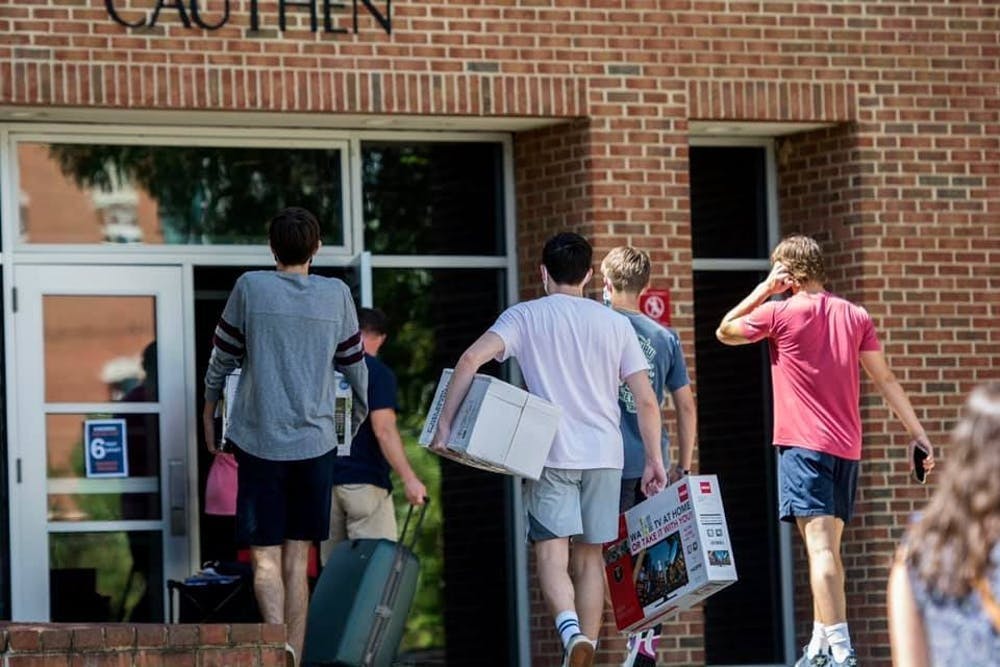中文版请点击此处
The University’s senior leadership team announced Aug. 28 that it would press forward with plans to welcome back on-Grounds residents and resume in-person instruction. This decision came after a two-week delay during which time many students and community leaders voiced their strong opposition to the University’s intention of reopening for the fall semester. In particular, many cited the failure of the University of North Carolina at Chapel Hill in implementing its reopening plan as a foreshadowing of what was to come if the University continued on the same path.
Although the question of whether the University should have reopened in the first place has long since become moot — the die has been cast — a more relevant question to ask now is what U.Va. administrators should do going forward. So far the University has been spared the massive surge in cases that has prompted other schools to shut down. In recent weeks, the University has invested heavily in its reopening plan — ramping up its own testing operation and setting aside 1,500 beds for quarantine and isolation housing. While the University certainly has not done a perfect job in containing COVID-19 — illustrated by the several first year dorms that have already had positive cases — it has managed to prevent the situation from spiraling out of control thus far.
With that being said, University administrators now find themselves at a critical juncture. On Sept. 22, University President Jim Ryan announced a series of new restrictions for students, faculty and staff living both on and off Grounds in response to a recent uptick in cases. Ryan acknowledged that these measures — including stricter gathering size limits and restrictions on travel to and from Charlottesville — would be “difficult” and alluded to the possibility of further restrictions, including curfews, should the situation fail to improve. Conversely, other schools, such as nearby James Madison University have opted to reverse course entirely and send students home in response to similar challenges. It is clear that the time has now come for U.Va. to grapple with many of the same difficult decisions that other colleges have been forced to make. Ultimately, there are two very distinct paths that the administration can take going forward — either impose further restrictions so as to mitigate the spread of the virus or simply transition all classes to virtual instruction and send students home.
While the latter option is certainly easier from a logistical and financial standpoint, according to Dr. Anthony Fauci, the director of the National Institute of Allergy and Infectious Diseases,it is also “the worst thing you could do.” Given that it takes, on average, anywhere from three to 14 days for those infected to begin showing symptoms of COVID-19 — of which nearly a quarter show no symptoms at all — shutting down the University could result in hundreds of asymptomatic students being sent home. This is especially important as parents, grandparents and other family members living back at home, unlike college students, are far more likely to have naturally weaker immune systems and are thus more susceptible to adverse health consequences should they become infected. Furthermore, with nearly a third of all undergraduate students coming from out of state, contact tracing those who might have been exposed in the event that U.Va. does, indeed, decide to send students home early is nearly impossible.
The University not only has a responsibility to protect the health and safety of its students, faculty and staff but also that of their families and respective communities. While transitioning all classes to virtual instruction and sending students home is certainly the easier route, it is by no means the right one. In the weeks and months to come, there will undoubtedly be more cases and further measures that will likely need to be taken. Denying this basic reality is naive at best.
Going forward, there needs to be increased transparency not only regarding the decisions made by the University administration but also in relation to possible COVID-19 outbreaks. Students and community members should not be relying on social media or word of mouth to receive critical information. Similarly, contingency plans also must be crafted and modified regularly so as help best protect the health of the University community. Finally, the groundwork for testing all students, both on and off Grounds, before they return home for Thanksgiving must be put into place in the coming weeks. While there are certainly no perfect solutions for the quagmire that the University now finds itself in, sending students home early in an attempt to avoid responsibility is, by no means, “Great and Good.”
Thomas Driscoll is an Opinion Columnist for The Cavalier Daily. He can be reached at t.driscoll@cavalierdaily.com.







